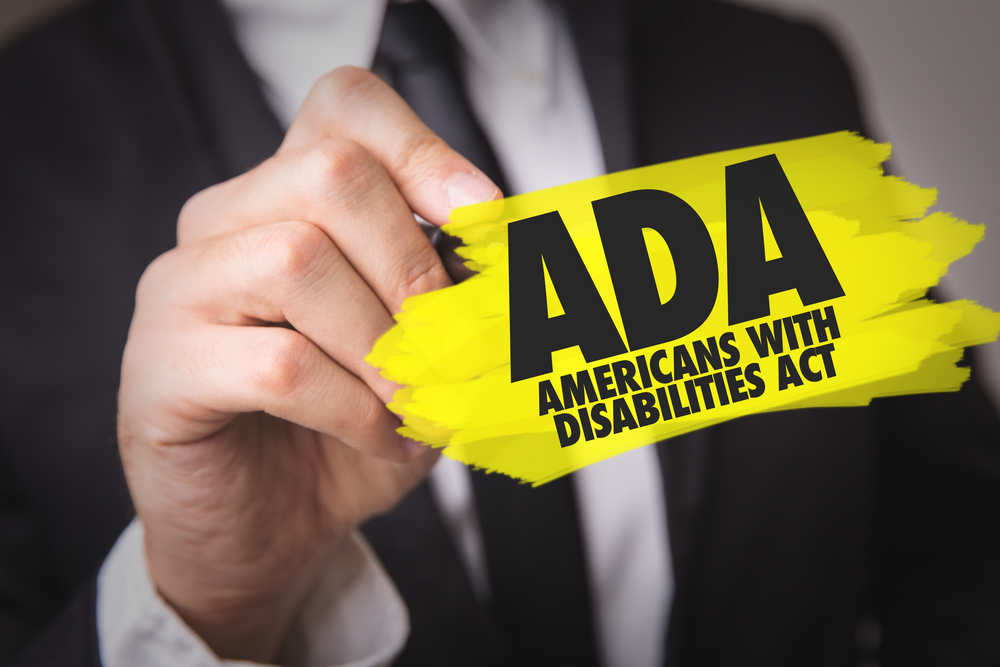
When we think of compliance with the Americans with Disabilities Act (ADA), we automatically think of companies with physical storefronts. Is the store wheelchair accessible? Is there adequate parking for the disabled? Are service animals welcome?
However, barriers can also exist in the digital world. According to the U.S. Census Bureau, one in five Americans live with some type of disability. That ratio represents the buying power of about 56.7 million people, including 8.1 million that have difficulty seeing and 7.6 million that have a hearing disability. Are you losing business by not making your website or mobile app accessible to people with disabilities? Are you at risk of receiving an ADA penalty?
What you need to know about ADA Compliance for eCommerce and how to ensure your website is compliant.
What does the ADA actually say?
The National Law Review issued a warning that “website accessibility lawsuits under ADA are on the rise.” The first step in getting compliant is to understand exactly what the ADA is. Below are the five main areas the legislation covers.
- Title I applies to employers. They must provide “reasonable accommodations” for applicants and employees with disabilities, and are prohibited from discriminating based on a person’s disability in all aspects of employment.
- Title II protects the rights of disabled persons to participate and use any government services, both state and local. For example, public transit buses must be accessible.
- Title III requires businesses that serve the public to make “reasonable modifications” to policies, procedures and infrastructure in order to accommodate persons with disabilities. For the majority of lawsuits involving eCommerce, Title III is the provision in question.
- Title IV applies specifically to telecommunications companies. They must provide telephone relay services and applicable devices for deaf persons.
- Title V prevents a person from threatening or retaliating against someone asserting their ADA rights.
Some confusion over rules
The ADA does not specifically mention eCommerce businesses. However, most courts agree that websites are accountable under Title III. The confusion occurs, though, because no clear rules have been established that outline exactly how websites can avoid violations. For example, there is some debate over whether the ADA applies to only companies that have brick and mortar stores as well as eCommerce websites, and not to eCommerce only companies. Further clarification on these rules is expected to come later this year, according to National Law Review.
What to do now
With 260 website accessibility lawsuits filed in 2016 alone, eCommerce businesses should be anxiously awaiting further clarification. In the mean time, the best plan of action is to get busy now. As we discussed at the outset, it’s not just about compliance. It’s also about the buying power of millions of Americans. Here are just two areas you should consider.
Accommodate the blind
Visually impaired individuals are able to navigate websites through the use of a screen reader, software that reads the text and converts it to audio for the visitor. However, websites must use code that is understood by screen readers. Alternative text must be embedded behind images and proper headers must be used. The alternative text should clearly describe the image. Otherwise, the screen reader will interpret it as “blank” or simply “image.” Ensure labels on forms are clearly identified. Imagine how difficult check-out would be if you didn’t know what to fill in where. As a customer, you would most likely move on to a site that was easier to navigate.
Additionally, make sure the site supports the latest browser versions since most issues with screen readers occur because of browser compatibility issues. Lastly, take simple steps like using high-contrast color schemes. Low-contrast colors make it hard for visually impaired customers to identify critical buttons or even differentiate between the foreground and the background.
Reach the deaf
Think about including sign-language videos for key parts of your site. Many deaf persons that have been hearing impaired since birth cannot read written words. They “read” only sign language. If sign-language videos are not possible, consider including captions or subtitles with videos on your site for those that can read.
There are numerous areas to think about when discussing ADA Compliance for eCommerce. Can the elderly easily navigate the site? What if customers lack fine motor skills? Can a colorblind customer find a product and make a purchase without hindrance?
To learn more about ADA Compliance for eCommerce, talk to the eCommerce experts at InteractOne about creative design that works for all potential customers.